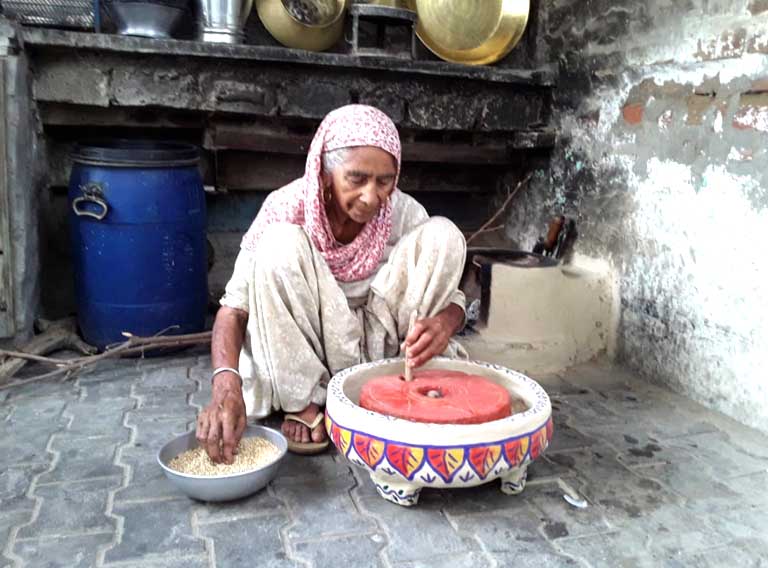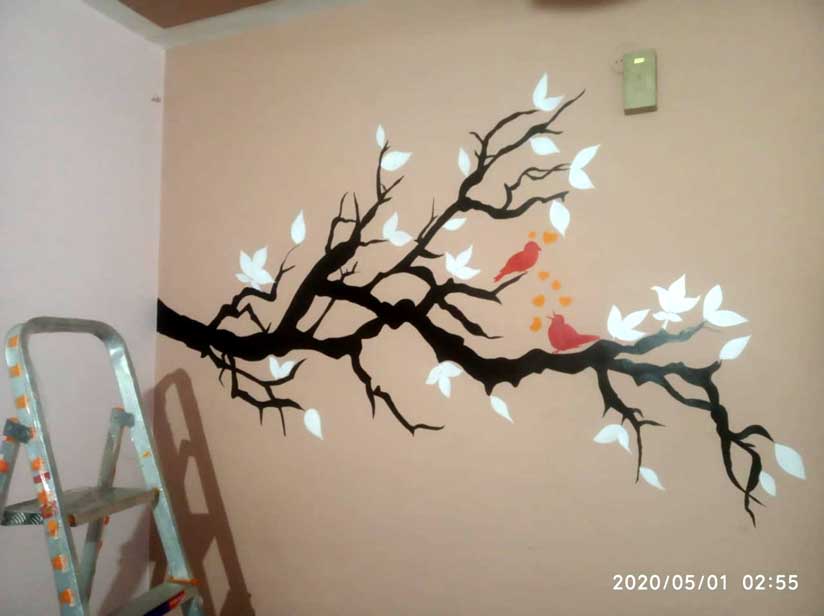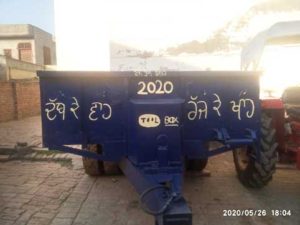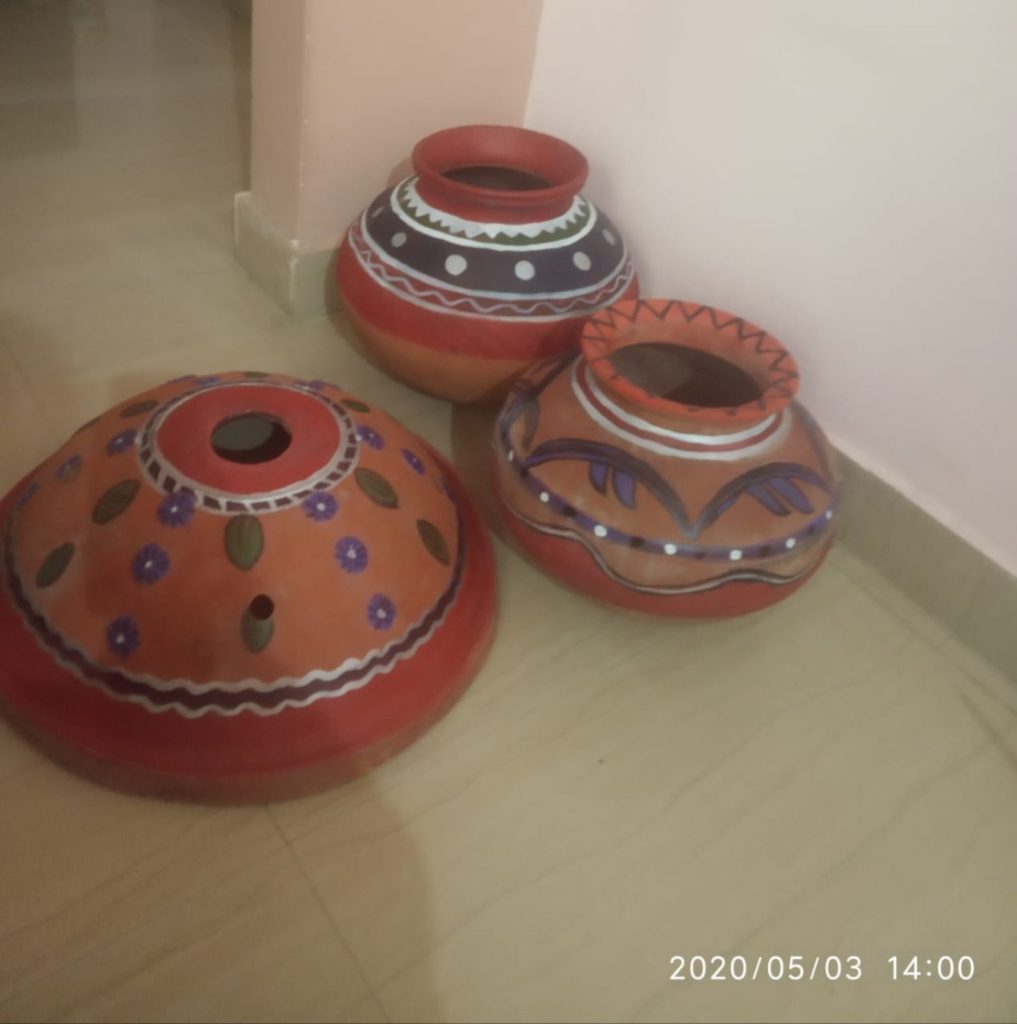My grandmother’s hand mill takes me down memory lane
Stay Home-Stay safe enabled many many to spend quality time with family, friends and live in environs of their choice, which they had been putting off for long. Gurleen Kaur, having done her schooling and studies in boarding educational institutions got the time to reconnect with her parents in her village and to closely imbibe the beauty of the culture of Punjab. She not only made good of the time lost earlier on by chatting and assisting her parents, but she also gained time, painting her house and homely cultural artefacts of erstwhile Punjab, pumping new life into them. Welcome to rustic Punjab through the paintings and words of a young artist.
![Stay Home-Stay safe enabled many many to spend quality time with family, friends and live in environs of their choice, which they had been putting off for long. Gurleen Kaur, having done her schooling and studies in boarding educational institutions got the time to reconnect with her parents in her village and to closely imbibe the beauty of the culture of Punjab. She not only made good of the time lost earlier on by chatting and assisting her parents, but […]](https://www.theworldsikhnews.com/wp-content/uploads/2020/06/Woman-with-pot-360x266.jpg)
DURING MY SOJOURN AT MY VILLAGE DURING THE LOCKDOWN, an object, atypical these days caught my attention. It was a hand mill which made me grind innumerable memories of childhood. I could visualize my grandma grinding pulses in that mill and smiling at me while I stared at her, observing her overawed with the simple grinding machine.
It seemed so precious to me that I decided to restore it and bring it to life by adding colours. As I was running out of canvases, I got another direction to engage in and started hunting for all those things at home which are nowadays out of use including pitchers and more. My grandma was really pleased and offered wonderful tips. These small objects are so wonderful and have the strength of joining us to our roots and culture.

American anthropologist and cross-cultural researcher, Edward T. Hall, explaining the depth of culture said, “Culture hides more than it reveals and strangely enough what it hides, it hides most effectively from its own participants. Years of study have convinced me that the real job is not to understand the foreign culture but to understand our own.”

When the colours of the brush touched these daily-use items, I realised that the plant blooms every day only because it is attached to its roots and gets the legacy of its uniqueness.

Hall warned, “We should never denigrate any other culture but rather help people to understand the relationship between their own culture and the dominant culture. When you understand another culture or language, it does not mean that you have to lose your own culture.”
Our culture is our identity which we need to keep alive. Punjab has its own heritage and the richness behind its culture is unique and blissful.
I depicted a glimpse of village life on the walls of our house. I put a little Gurbani on my father’s tractor-trolley as farmers love their machinery painted with words of God’s grace.
my father’s tractor-trolley as farmers love their machinery painted with words of God’s grace.
With people at home, village life too changed, perhaps for the better. The social gatherings, the elderly playing cards under the Banyan tree in the Sath -the village Social Media centre, the kids playing in the streets were all conspicuous by their absence.
The Gurbani rendition in the mornings from the village Gurdwara woke me up and it was a delight to admire the beautiful sunrise overseeing the green fields through the back side window of my room.
 The sun was blistering, yet our hardworking farmers, including my father, were working in the fields. In the evenings, people prepared to sleep and spend time, across the rooftops, strengthening bonds of brotherhood, without any fears of violating social distancing rules. The neighbourhood was an extended family.
The sun was blistering, yet our hardworking farmers, including my father, were working in the fields. In the evenings, people prepared to sleep and spend time, across the rooftops, strengthening bonds of brotherhood, without any fears of violating social distancing rules. The neighbourhood was an extended family.
This connection between the arts, ideas, customs and behaviour gave me a small understanding of the culture of our society. Yet, culture and all it encompasses is as vast as an ocean and maybe I could experience just a drop -the tip of the iceberg, as they say.
Gurleen Kaur is a Punjab-based budding artist and writer, inter-twining her taste for painting and writing in a unique way. She depicts common day life on her canvas with ease and writes essays to bring out the goodness in people.

8 thoughts on “My grandmother’s hand mill takes me down memory lane”